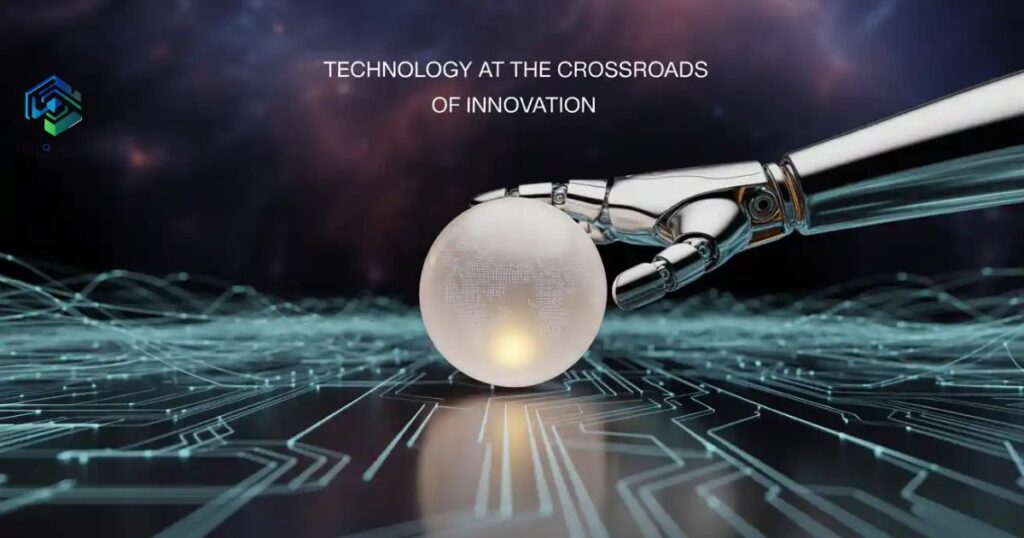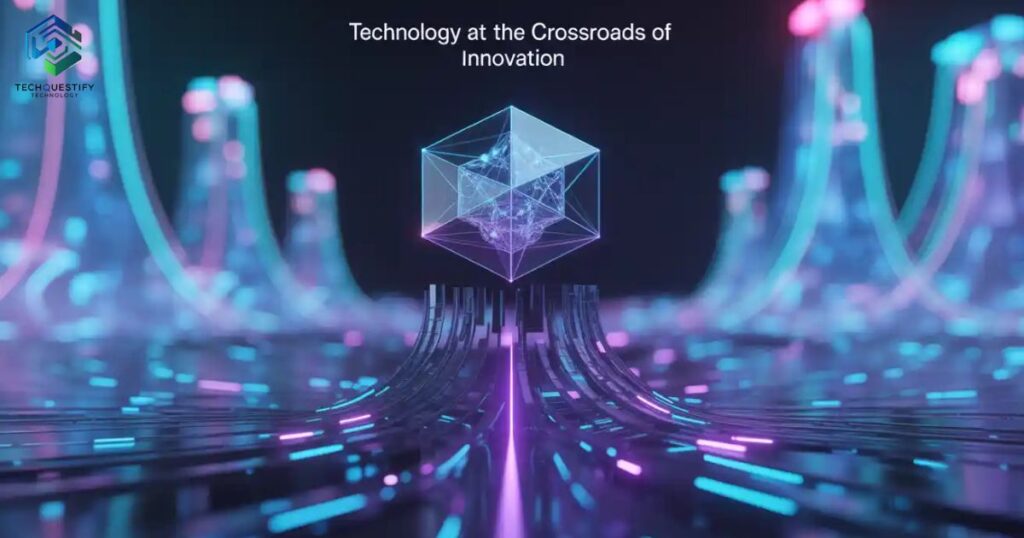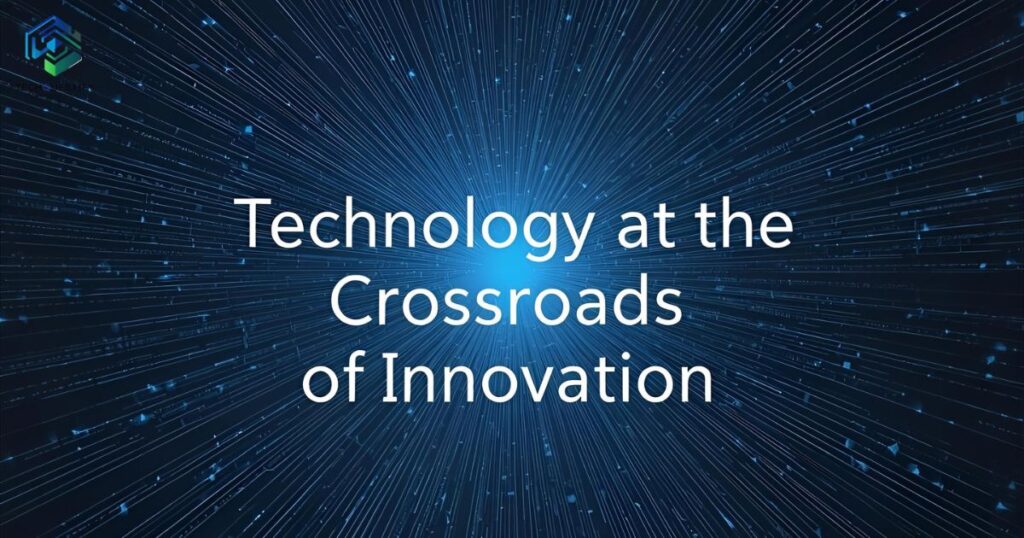Introduction – Technology at the Crossroads of Innovation
At this moment, the United States stands at the heart of Technology at the Crossroads of Innovation, where progress and responsibility meet. The nation faces growing demands for greenhouse gas emissions reduction and smarter solutions that fuel economic growth while protecting the planet. From renewable energy integration in smart grids to sustainable chemical production in modern industries, America is shaping a new path forward.

The push toward decarbonization of industry highlights how robotics, artificial intelligence, and climate tech are merging into one powerful force. This is not just about inventions; it is about creating a sustainable and profitable future that inspires global change.
The Role of Robotics in Building the Future
Robotics is no longer limited to factories. Robots are working in hospitals, warehouses, and even farms. U.S. companies lead in building modular chemical reactors and autonomous systems that push efficiency forward. Robotics is key for circular production pathways, where waste is reused and products last longer.

The American workforce is adapting to this new era. Robots now handle repetitive tasks, while people focus on creativity and decision-making. With scalable green technology and climate-friendly industrial solutions, robotics becomes a bridge between economic development and environmental responsibility.
AI and Machine Learning Powering Next-Gen Innovation
Artificial intelligence is powering the U.S. economy. From finance to healthcare, AI uses data to predict outcomes and improve services. AI-powered robotics also allows decentralized chemical production, creating systems that can run with minimal human oversight.
Machine learning is now central to clean energy-driven manufacturing. These tools optimize low-carbon feedstocks, reducing waste and costs. The United States is investing in AI research to maintain global leadership, with companies adopting AI for faster growth and better results.
Climate Tech – Driving Sustainable Transformation
Climate technology is central to U.S. innovation strategy. The rise of CO₂ utilization technology shows how captured carbon can be turned into valuable chemicals. For example, enaDyne in Leipzig uses plasma catalysis and non-thermal plasma to turn CO₂ into methanol and ethylene.

Such progress proves how decarbonization of industry is possible. With support from groups like Amadeus APEX Technology Fund, Amadeus Capital Partners, APEX Ventures, and Energy Capital Ventures, startups push new limits. These investments lead to plasma-based emission abatement and smarter climate strategies.
Breakthrough Startups Leading the Green Revolution
The United States is home to bold startups tackling climate challenges. Inspired by success stories like enaDyne, U.S. innovators create solutions for energy-efficient chemical processes and electrification of chemical industry. Many of them secure large funding rounds similar to €7 million seed funding or even €15 million total raised.
Founders such as Philipp Hahn, Christian Koch, Martin Drößiger, and Torsten Lorenz prove that combining research with vision drives progress. Teams often resemble the 35 employees from 14 countries / 10 languages / 20% women workforce that power enaDyne. This global diversity strengthens the mission of linking sustainability with profit.
Renewable Energy Storage and Grid Innovation
Energy storage is vital for U.S. growth. The country is adopting new battery systems and building smart grids that support renewable energy integration. These grids balance supply and demand, cutting costs and improving reliability.
Companies also test microgrids that support circular production pathways. By mixing solar, wind, and storage, communities gain independence from fossil fuels. The technology ensures climate-friendly industrial solutions that can scale across the nation.

The Rise of “Gigacorns” in the Climate Economy
A gigacorn is a startup that can cut one gigaton of carbon emissions while making profits. The U.S. leads in supporting such firms through both federal funding and private investors like Antares Ventures, Possible Ventures, and leaders such as Wolfram Drescher, Andreas Werne, and Sven Sieber.
These companies build sustainable chemical production processes, use advanced electrode materials, and focus on global impact. Gigacorns show the world that innovation and sustainability can move together toward a better future.
Cutting-Edge Inventions Reshaping Our Daily Lives
New inventions are already changing daily life. Pill-sized robots help doctors assess gut health, while enaCeramics electrodes improve energy efficiency in non-thermal plasma systems. U.S. innovators adapt these tools for industries ranging from medicine to construction.
Self-healing materials, AI-driven apps, and CO₂ utilization technology are entering the American market. These inventions reduce reliance on fossil-based feedstocks and create a world of energy-efficient chemical processes.

Investment Trends in Tech and Climate Innovation
Investment in U.S. technology is strong. Venture funds and government programs back clean energy-driven manufacturing, helping startups scale faster. Similar to Europe’s €7 million seed funding rounds, U.S. companies attract billions every year.
A quick look at recent U.S. investments:
| Year | Investment Type | Focus |
| 2023 | VC Funding | AI and robotics |
| 2024 | Federal Grants | Climate tech, CCUS |
| 2025 | Private Equity | Plasma-based emission abatement |
This proves investors see long-term potential in chemical industry innovation and climate-friendly projects.
Challenges in Scaling Innovation Globally
Innovation does not grow without barriers. U.S. companies face regulatory challenges, international competition, and limits in infrastructure. For example, adopting carbon capture and utilization (CCUS) often requires heavy upfront costs.
Still, these hurdles spark creativity. By focusing on scalable green technology and decentralized chemical production, businesses can overcome global resistance. America’s role is to set standards that balance profit with responsibility.
Future of AI-Powered Robotics in Everyday Life
In the coming decade, robots will enter U.S. homes, hospitals, and schools. They will assist in healthcare, manage low-carbon feedstocks, and optimize circular production pathways. AI ensures robots learn faster and perform more complex tasks.
Experts predict that robots will integrate with renewable energy integration systems, allowing clean energy-driven manufacturing to run seamlessly. This is the true meaning of Technology at the Crossroads of Innovation in everyday life.
How Businesses Can Prepare for the Tech-Climate Future
Businesses in the U.S. must act now. The future belongs to those who adopt sustainable chemical production and energy-efficient chemical processes. Embracing decarbonization of industry and electrification of chemical industry secures long-term growth.
American companies should follow the example of DBFZ Leipzig and firms like enaDyne that link profit with purpose. With modular chemical reactors and CO₂ utilization technology, U.S. firms can join the next wave of leadership.
Conclusion – Reinventing Invention for a Better Tomorrow
The USA stands tall at the meeting point of creativity and responsibility. Technology at the Crossroads of Innovation proves that robotics, AI, climate tech, and green startups are not separate forces. They are part of one story.
From Philipp Hahn and Christian Koch in Leipzig to U.S. entrepreneurs driving plasma catalysis, the message is clear. With courage, smart funding, and a focus on climate-friendly industrial solutions, the future of invention can be sustainable and profitable at the same time.

FAQs
Q1. What does “Technology at the Crossroads of Innovation” mean?
It means we are at a turning point where new inventions must balance progress with sustainability.
Q2. Why is the USA central to tech and climate innovation?
Because it leads in AI, robotics, and renewable energy while driving global investments.
Q3. How does innovation help reduce greenhouse gas emissions?
Through CO₂ utilization technology and energy-efficient chemical processes that lower pollution.
Q4. What role does renewable energy integration play?
It powers industries with clean energy, supporting decarbonization of industry.
Q5. How can businesses prepare for future innovation?
By adopting climate-friendly industrial solutions and investing in scalable green technologies.


